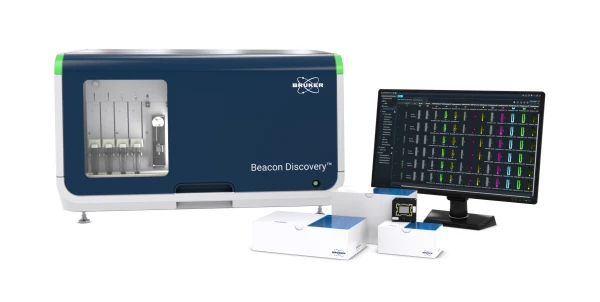Downstream Processing and Refinement of Cannabis Concentrates
The various methods of cannabis extraction can produce an equally diverse range of cannabis concentrates. As mentioned, the plant strain serves a significant role in production of cannabis compounds (cannabinoids, terpenes, flavinoids) at varying concentrations. The extraction process can be selected and, in many cases, “tuned” to pull out preferred compounds for certain applications. Using these methods, the resulting concentrates can have distinct profiles of compounds and distinct aromatic, taste, texture, and bioactive properties to match.
Beyond the compounds mentioned above, concentrates can also contain background materials such as lipids, waxes, and even chlorophyll, originating from the plant material itself. Although useful for some applications, there is often a need for further refinement of these concentrates to remove these “contaminants”. This can be true whether the objective is to preserve the profile of compounds (e.g. entourage effect) or to purify distinct compounds from a cleaner defined background. Here we briefly discuss various refinement steps.
Winterization
An initial stage in removing the contaminant background from these materials involves a process termed “winterization”. Essentially, the concentrate is dissolved or diluted in an excess of ethanol at low temperature <-20°C. This causes the lipids, fats, and waxes to precipitate from solution. This procedure requires strict low temperature control during the precipitation and downstream filtering process in order to remain effective. The resulting ethanol is removed by the use of a rotary evaporation system for smaller batches or vacuum distillation in large batch form. At this stage, the refined concentrate can be used in various applications or carried on through further processing for medicinal applications.
Vacuum Distillation
Bioactive compounds including THC and CBD can be fractionated from refined concentrates taking advantage of inherent chemical properties. As both THC and CBD have high boiling points, vacuum distillation can be leveraged to effectively lower the boiling points while preventing thermal degradation and oxidation. Several distillation techniques can be employed depending on the extent of purification desired.
Short-path distillation makes use of a multi-position receiver setup. As the vacuum vessel is gradually heated, the receiving flasks are changed to collect compound fractions arising through the condenser. In fractional distillation, longer fractionating column is used to enable finer separation of the components. A third type, termed wiped film distillation, uses the action of rotating wipers and rollers in a mechanism to generate fine fractionation of compounds. Process optimization and strict control of feed rate, pressure levels, and temperature make this technique capable of high fidelity compound isolation, in batch or continuous mode.
HPLC Fractionation
High Performance Liquid Chromatography is the industry standard for compound isolation, whether that be small analytical fractions for potency testing or large preparative fractions for compound purification. The compatibility with cannabis extracts, the availability of numerous columns and fractionation media, and the scalability makes the technique advantageous. As a brief review, cannabis extract diluted in solution is passed through a column with stationary phase media. Selective interaction (binding) between compounds in the solution and the stationary phase gives rise to compound separation and fractionation. Detectors measure the abundance of compounds in the fractionated eluate, providing a chromatograph and collection of fractions for further analysis. Although typical methods for cannabinoid isolation are relatively straightforward, the costs associated large-scale preparative HPLC can be steep. The background material can foul the columns, excess dilution of input material can consume excess reagent, and the time and overhead costs can be extensive in running and maintaining the instrumentation.
Centrifugal Partition Chromatography (CPC) Fractionation
Technologies such as CPC have recently emerged to tackle the short comings of HPLC for cannabinoid purification. CPC is a liquid chromatography technique which uses immiscible mobile and stationary liquids to form a two-phase separation scheme. A silica-free technique, CPC uses centrifugal force to maintain the liquid stationary phase inside the column. Cannabinoid purification is attained by pumping the liquid mobile phase through the extraction cells in the CPC column. Compounds are separated based on individual partition coefficients, and fractionation can be tuned by varying the composition of the two phases and thus modifying the partition coefficients.
The increased speed and lower reagent consumption make CPC attractive from a cost perspective. Moreover, several vendors produce CPC platforms for small scale labs, and large-scale processing operations as well. The downsides of these systems include the upfront costs in purchasing the equipment, the resource investments in method development, and the operating costs associated with maintenance. The fact that columns can be regenerated, reagent consumption is comparably low, and yield can be significantly higher than traditional techniques, indicates that CPC may find great success in the extraction side of the industry.
Be sure to peruse our growing resource library of cannabis related articles for further information and insight.
Shop now at our exclusive Cannabis Laboratory application page – dedicated to the latest new and used equipment designed to meet the challenges of the emerging and promising field.










